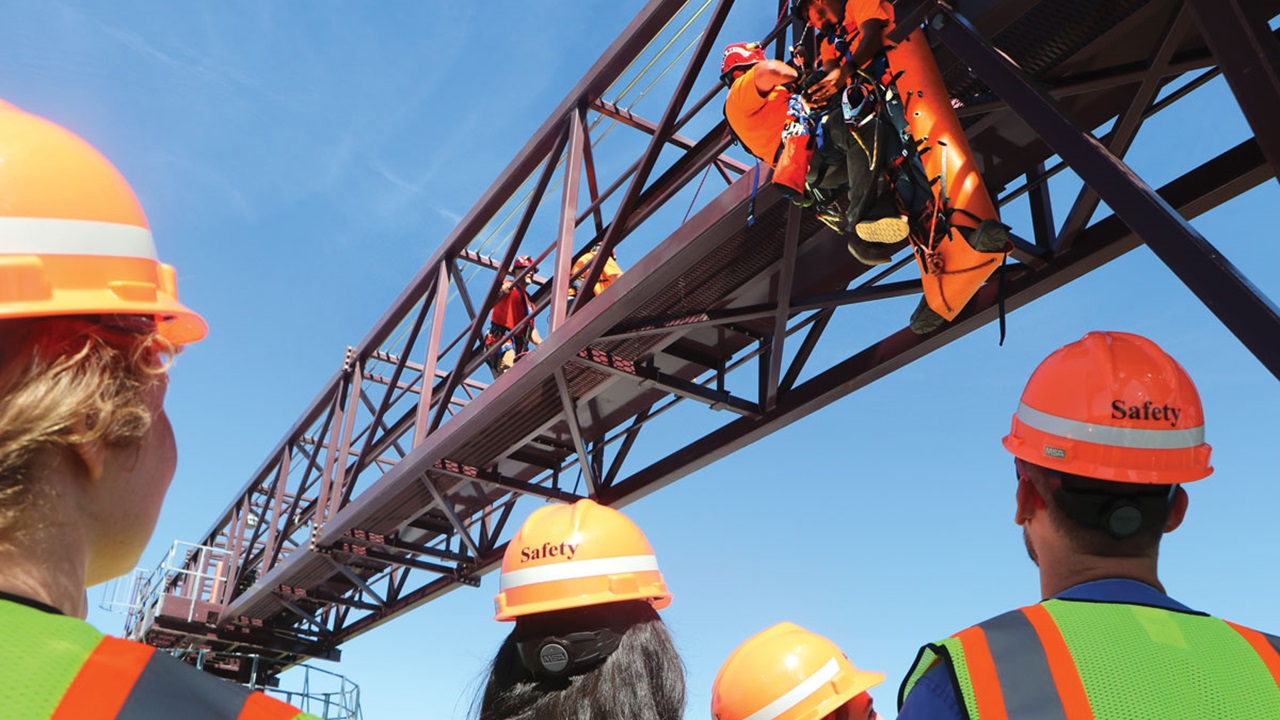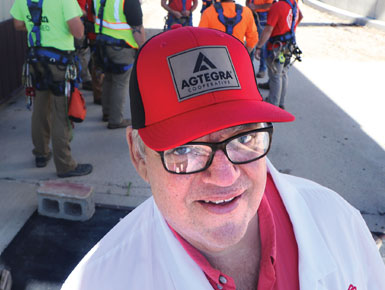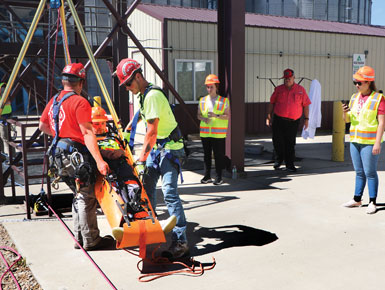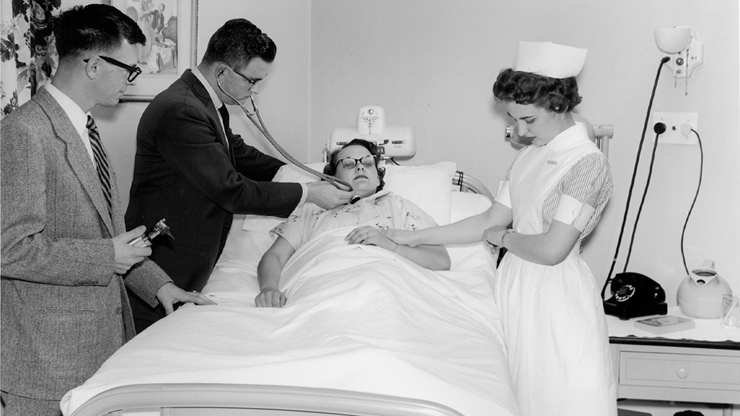Ardent Advocate Dr. Matt Owens Leads Charge to Mitigate Rural EMT Crisis

Many South Dakotans understand what it means to reside in areas where certain amenities and conveniences aren’t readily available; but what if a critical service is absent?
Rural EMT responders are vital to the quality of life rural Americans are presented with, but when an emergency strikes in some rural areas of South Dakota, it can take a substantial amount of time before those emergency medical service personnel arrive at the scene. In 2015, Department of Health data indicated that one-third of EMTs were unable to respond to an emergency in an appropriate time frame.
From an EMS standpoint, in rural areas of South Dakota, where just a few minutes can make the difference between mortality and survival, this is a crisis.
According to the South Dakota Department of Health, there are 128 ambulance services in South Dakota’s 66 counties, and some rural areas have very limited emergency transportation services. Two west river counties, large in geographical size – Ziebach and Stanley – have none. Others, such as Harding, Jackson and Tripp Counties, have just one sole provider to service a minimum of 1,618 square miles and 1,327 residents.
A familiar face in South Dakota rural emergency care is Dr. Matt Owens, one of the state’s biggest advocates and change-makers of rural training. A rural family physician at Redfield Community Memorial Hospital and a 1993 SSOM graduate, Dr. Owens is also the medical director for the Upper (Missouri River) Basin Disaster Training Center. He was a medic in the U.S. Army and began work as an EMT in 1982. In 1997, he started his family practice and joined the SSOM clinical faculty in the Department of Family Medicine shortly thereafter.
“I have a lifetime passion and drive in this area,” Dr. Owens says. “What I’ve seen in 40 years working in emergency care and in 25 years as a rural physician is that we have too many emergency cases that could be remedied with more training.
“This is going to take an all-hands-on-deck approach,” he continues. “It’s not just rural and Level 2 trauma centers, it’s all of them. Training must be integrated, and we are getting it built, but we need players to show up. If we could get 50-100 new EMTs, it would be a significant improvement for South Dakota.”
In the state of South Dakota, there are 3,000 licensed EMTs but only 1,600 of those are active. Why? According to Dr. Owens, there are a few reasons.
There are high levels of stress and lack of funding. The amount of 911 calls has increased and the distance to transfer patients is longer. Ambulance services struggle to pay their bills –there just isn’t enough funding.
Many EMTs don’t have the flexibility with a full-time job to respond to calls, or they are not being compensated enough for responders to feel it’s worth their time. And, just as in numerous sectors of health care, many caregivers are simply aging out.
“This is a generational challenge,” explains Dr. Owens. “It will be ongoing unless something totally changes in demographics and in numbers of people living in rural South Dakota. This is just how it is. Our new physicians must be willing to carry on to the next generation to resolve.”
He says that township-level responders and/or EMTs should be the first echelon of care at the scene of an accident to treat shock and administer STOP THE BLEED®. This is a new level of intervention that could be set up quickly with rural volunteers, he adds.
“Trauma is all about time: the time of injury to the time it takes to get to a surgeon,” he says. “The quickest, earliest people on the scene are people with this training. They can do triage until rural EMTs pick up the patient and take them to a hospital. This is the model that works the best.”
Dakota Responder Program Finding and Training More EMTs
The Dakota Responder Program was created by Dr. Owens in collaboration with the SDSMA and farmers to provide instruction in three lifesaving areas: STOP THE BLEED®, administering Narcan and AED operation. The hope is that future EMTs can be recruited from those who complete Dakota Responder training; so far, Dr. Owens estimates 130 rural responders have been trained. The program is funded by a four-year, $2.2 million U.S. Department of Labor grant.
According to Dr. Owens, 60-90 school districts in South Dakota have expressed interest in receiving Dakota Responder Training. “We need to start at the high school level,” he says. “Teachers and administrators should have the training and students should be trained by their junior year. Regionally, it’s appropriate to bring training right down from the SSOM to high schools.”
Dr. Owens believes medical students should be trained as trainers and act as adjuncts to offer it. Medical professionals can be an advocate for this kind of training, whether it’s a local school or hospital board, he says.
Agtegra Cooperative’s Action
Agtegra Cooperative, a grain and agronomy company serving the Dakotas and based in Aberdeen, South Dakota, has taken an advanced approach to help mitigate the EMT shortage issue.
In collaboration with Dr. Owens and the USD Sanford School of Medicine, Agtegra has become the first company to implement the Dakota Responders Program for its employees. Because of Agtegra’s footprint in rural eastern South Dakota, employees are well-positioned to provide lifesaving care until EMS personnel can arrive. Each trained Agtegra employee is provided with a “ditch kit,” which provides them with the life-saving tools they need in case they encounter an emergency, including a CPR face mask, a tourniquet, a Mylar blanket for thermal injury and Narcan.
In August 2022, Dr. Owens and a group of seven USD SSOM FARM students attended a training day at one of Agtegra’s Warner, South Dakota, grain bins. The group participated in a rescue exercise to witness firsthand the types of challenges presented with rural work and life.
Autumn Hurd is one of those students. The Pillar 2 student training at the Milbank FARM site said, “This training gave me a deeper insight into and appreciation for the people who go out and save people after farming accidents. It can be intimidating to come to rural settings where you know you do not have the resources that being in a bigger city would provide. However, watching the dedication and pride the team had for their jobs and training was very impressive.”
The Bridgewater, South Dakota, native, continued on to say that the exercise exposed her to something she’d never seen before. “The process of how they strap people into the equipment, raise people from inside the ground, or lower people from the height of a grain bin was completely new to me,” she explained. “Seeing this process really taught me what they do and allowed me to witness the training and effort it takes to save people after these accidents or health emergencies. No matter which specialty I choose, I am going to need this kind of emergency training.”
According to Dr. Owens, the model followed by Agtegra could be replicated in every agricultural state in the U.S. He’s reached out to physicians around the country to gain interest in the training in the hopes of it catching on in rural U.S. To his knowledge, South Dakota is the only state currently doing this type of training.
However, the most critically missing piece for training to get to more areas is a consistent funding source. As with many areas, funding is the missing piece of the puzzle to give the training a boost and assure more EMTs in rural areas and save more lives.
The U.S. Department of Health grant made strides in bridging a service gap, but much more is to be done, something Dr. Owens and many others are determined to remedy: “In the end, we just want to save lives.”
Photos courtesy of Mikkel Pates, Agweek



